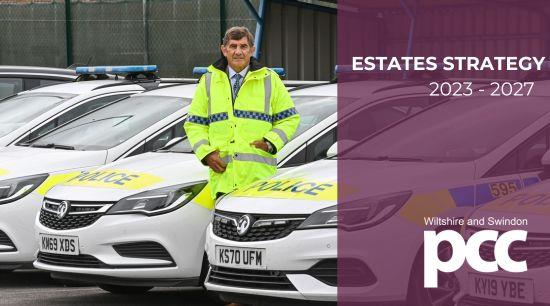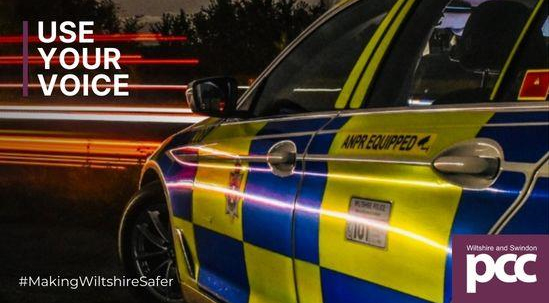Police & Community Messages
Wiltshire Police are committed to ensuring our communities are at the heart of our policing model. This will help us meet the needs of those we serve in the most effective and transparent way possible.
We first introduced our Community Policing model in 2016 and, in the last five years, we’ve updated and adapted the model to reflect the changing needs of our community. This ensures our model continues to be effective for 21st century policing.
In 2019, we restructured the geographical Community Policing Team (CPT) areas and introduced dedicated neighbourhood officers.
At the time, the former Police and Crime Commissioner wrote to partners across the county to update on our modifications to the policing model, but I am conscious that in recent years, particularly with the ongoing global pandemic, there have been many changes within our communities, in our policing roles and with the ways we work, so I wanted to write and re-introduce the model and remind you of how we are policing your community.
The policing model
- As a police force, we cover the whole county, across both local authority areas for Wiltshire Council and Swindon Borough Council.
- The county is divided into eight Community Policing Teams (CPTs).
- Each team is led by an Inspector and made up of designated Response and Neighbourhood officers.
- Each CPT has five Response Teams with each one being led by sergeants. The main role of these officers is to respond to 999 and 101 calls and manage ongoing investigations.
- Each CPT has a Neighbourhood Team. In Swindon this is divided into three areas. These are led by an Inspector and made up of sergeants, officers, Police Community Support Officers (PCSOs), volunteers and police staff.
Our Neighbourhood Teams play a valuable role as the main link between the Force and the community. They are the officers and volunteers you will come to recognise in your communities and will see at local meetings and events.
Our neighbourhood officers focus directly on working within the community, offering greater contact with the public and take a problem-solving approach to local community issues.
Your Community Policing Team
We continue to work hard to embed our neighbourhood officers within the town and parish communities and we are working to raise awareness of these teams and how the public and partners can best engage and communicate with them.
Below, you will find an updated list of all our CPTs, the Inspectors who lead them and how you can get in contact with them. You can also find out more information about the team and our policing priorities in the ‘Community Policing Team’ area on our Force website.
We need your help to spread the word
We want every resident to know who their local officers are and how they can contact their local Community Policing Team (CPT).
To help us achieve this please find attached two graphics (half-page and full-page versions) that I kindly ask you share with your local residents and include in any upcoming parish newsletters or communications. These graphics can be used up until May 2022. Following this please contact your local CPT for an updated copy, marking your email for the attention of Corporate Communications and Engagement.
Your support in spreading the word and informing local residents is much appreciated.
I know that many of you may already have regular contact with your local officers. We would like to build on this in 2022, so I would encourage you to share any ideas you may have on how we can work better together and develop this relationship and actively raise awareness locally.
We look forward to continuing to work with you to make our communities safer.
Wiltshire Police are committed to ensuring our communities are at the heart of our policing model. This will help us meet the needs of those we serve in the most effective and transparent way possible.
We first introduced our Community Policing model in 2016 and, in the last five years, we’ve updated and adapted the model to reflect the changing needs of our community. This ensures our model continues to be effective for 21st century policing.
In 2019, we restructured the geographical Community Policing Team (CPT) areas and introduced dedicated neighbourhood officers.
At the time, the former Police and Crime Commissioner wrote to partners across the county to update on our modifications to the policing model, but I am conscious that in recent years, particularly with the ongoing global pandemic, there have been many changes within our communities, in our policing roles and with the ways we work, so I wanted to write and re-introduce the model and remind you of how we are policing your community.
The policing model
- As a police force, we cover the whole county, across both local authority areas for Wiltshire Council and Swindon Borough Council.
- The county is divided into eight Community Policing Teams (CPTs).
- Each team is led by an Inspector and made up of designated Response and Neighbourhood officers.
- Each CPT has five Response Teams with each one being led by sergeants. The main role of these officers is to respond to 999 and 101 calls and manage ongoing investigations.
- Each CPT has a Neighbourhood Team. In Swindon this is divided into three areas. These are led by an Inspector and made up of sergeants, officers, Police Community Support Officers (PCSOs), volunteers and police staff.
Our Neighbourhood Teams play a valuable role as the main link between the Force and the community. They are the officers and volunteers you will come to recognise in your communities and will see at local meetings and events.
Our neighbourhood officers focus directly on working within the community, offering greater contact with the public and take a problem-solving approach to local community issues.
Your Community Policing Team
We continue to work hard to embed our neighbourhood officers within the town and parish communities and we are working to raise awareness of these teams and how the public and partners can best engage and communicate with them.
Below, you will find an updated list of all our CPTs, the Inspectors who lead them and how you can get in contact with them. You can also find out more information about the team and our policing priorities in the ‘Community Policing Team’ area on our Force website.
We need your help to spread the word
We want every resident to know who their local officers are and how they can contact their local Community Policing Team (CPT).
To help us achieve this please find attached two graphics (half-page and full-page versions) that I kindly ask you share with your local residents and include in any upcoming parish newsletters or communications. These graphics can be used up until May 2022. Following this please contact your local CPT for an updated copy, marking your email for the attention of Corporate Communications and Engagement.
Your support in spreading the word and informing local residents is much appreciated.
I know that many of you may already have regular contact with your local officers. We would like to build on this in 2022, so I would encourage you to share any ideas you may have on how we can work better together and develop this relationship and actively raise awareness locally.
We look forward to continuing to work with you to make our communities safer.

The new strategy provides residents with a comprehensive vision for how well-placed police stations, hubs and touchdown points provide the right facilities for Wiltshire Police to work smarter, adapt to changing crime demand and, more importantly, provide greater visibility and reassurance in communities. Main highlights include the planned investment of more than £100m over the next ten years which includes:
Plans to invest more than £100M into Wiltshire Police estate – including the modernisation and redevelopment of police headquarters in Devizes and the delivery of a Southern Policing Hub - over the next 10 years have been announced.
This commitment to investment in facilities from the Police and Crime Commissioner is specifically designed to support the changes to the new operating model recently implemented by Chief Constable Roper to improve local policing services by providing a more consistent policing approach alongside increased proactive and visible policing within communities.
To find out more visit: Estates Strategy 2023 - 2027 (wiltshire-pcc.gov.uk)


